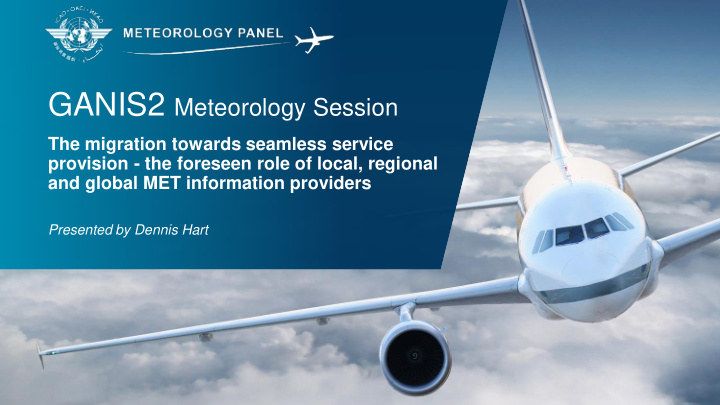



GANIS2 Meteorology Session The migration towards seamless service provision - the foreseen role of local, regional and global MET information providers Presented by Dennis Hart
• Meteorology is >200 years old • Aviation Meteorology is >100 years old • Standards and Recommended Practices relating to meteorology were first adopted by the Council on 16 April 1948 (Annex 3) • Core principles laid down on ‘who does what’ in Aviation Meteorology largely unchanged since the 50-ties
Evolution in communication Source graphic: The Opt Project (Wikipedia)
Evolution in digital data storage Source graphic: Myworkforwiki
Evolution in computing power Source graphic: ExtremeTech
Source graphic: AppDynamics
Evolution in MET science and capabilities
• To overcome current shortcomings • To support the future needs of aviation • To improve cost-effectiveness of service provision
• Further development of ‘phenomena - based’ service provision or so-called borderless service provision • Evolving roles and responsibilities of local, regional and global MET information providers
Traditional set-up MET service provider Source graphic: WMO
A typical national set-up of MET service provision Source graphic: JMA
Illustrative
• ICAO Annex 3 ‘functions’ – Aeronautical Meteorological Station – Aerodrome Meteorological Office – Meteorological Watch Office
• ICAO Annex 3 ‘functions’ State / FIR / Aerodrome based
‘Weather crossing borders’ State A State B State A State B State A State B
‘One consolidated source sometimes better than individual best sources’ State A State B State C State D Illustrative
‘Seamless and harmonised prevails over piecemeal information’ • TAFs for departure/arrival/alternate destinations • MET for airport operators • MET for local ATC • MET for enroute phase • MET Advisories • SIGMET • Etc. Illustrative
MET Service Provider and Consumer Community discussing the best model for future service provision
Not excluding any option! Such as ……. Consolidation
Understanding the intrinsic limitations of predictability Source graphic: WMO
Understanding that Core MET facilities are required • Direct functions or parts thereof that contribute to aviation could go • Core MET infrastructure is still required • Fair share of Core MET infrastructure should be cost-recoverable through aviation
• Recap • Carefully consider the role and responsibilities of MET Service Providers: – To overcome current shortcomings – To support the future needs of aviation – To improve cost-effectiveness of service provision
Thank you!
Recommend
More recommend